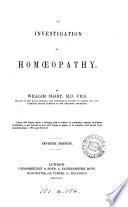 | John Frederick William Herschel - 1849 - 672 pages
...following proposition:—" The squares of the periodic times of any two planets are to each other, in the same proportion as the cubes of their mean distances from the sun." Take, for example, the Earth and Mars,* whose periods are in the proportion of 3G52564 * The expression... | |
 | Hugo Reid - 1850 - 156 pages
...areas in equal times. 2. The orbits of the planets are ELLIPSES, having the sun in one of the foci. 3. The squares of the periodic times of the planets are...as the cubes of their mean distances from the sun. _ 497. The radius vector of a planet is an imaginary straight line from the sun to the planet, supposed... | |
 | Friedrich Schoedler - 1858 - 728 pages
...meanwhile traverse. 3. The squares of the times of revolution of any two planets are to each other in the same proportion as the cubes of their mean distances from the sun. The world-renowned Newton placed the key-stone upon the noble edifice founded by his great predecessor.... | |
 | William Sharp - 1853 - 286 pages
...in equal times. 3rd — The squares of the times of revolution of any two planets are to each o'her, in the same proportion as the cubes of their mean distances from the sun. " Of all the laws," says SIR JOHN HERSCHELL, " to which induction from pure observation has ever conducted... | |
 | Thomas Fisher - 1854 - 156 pages
...the following proposition : " The squares of the periodic times of any two planets are to each other in the same proportion as the cubes of their mean distances from the sun." Take for example, the Earth and Mars, whose periods are in the proportion of 365.2564 to 686 .9796,... | |
 | William Sharp - 1856 - 384 pages
...in equal times. 3d — The squares of the times of revolution of any two planets are to each other, in the same proportion as the cubes of their mean distances from the sun. " Of all the laws," says Sir John Herschel, " to which induction from pure observation has ever conducted... | |
 | Robert James Mann - 1856 - 510 pages
...periodic times (that is, the periodic times multiplied by themselves) of any two planets are to each other in the same proportion as the cubes of their mean distances from the »tm (that is, the numbers representing the mean distances multiplied twice by the some amount) —... | |
 | Alexander Mackay - 1861 - 790 pages
...planet may be moving. 3. Tho squares of the times of revolution of any two planets are to each other in the same proportion as the cubes of their mean distances from tho sun. Finally, the world-renowned Newton (born at Woolsthorpe in Lincolnshire, in 1643) placed the... | |
 | John Lockhart (of Kirkcaldy.) - 1862 - 216 pages
...you find the distances of the other planets ? By the application of Kepler's " Third Law." Which is, that ? " The squares of the periodic times of the...as the cubes of their mean distances from the sun." What is the zodiac ? A zone or belt of the heavens about 18 degs. wide, extending about 9 degs. N.... | |
 | Alexander Stewart - 1864 - 684 pages
...areas in equal times. 2. The orbits of the planets are ELLIPSES, baring the sun in one of the foci. 3. The squares of the periodic times of the planets are...as the cubes of their mean distances from the sun. The radius vector of a planet is an imaginary straight line from the sun to the planet, supposed to... | |
| |